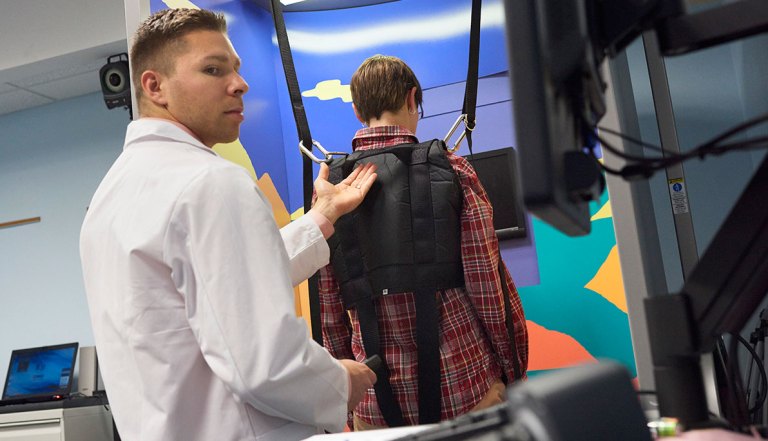
After a Boston University study released this summer showed a high percentage of former football players suffered from chronic traumatic encephalopathy, parents, players and coaches grew more concerned about concussions in football.
Dr. Hallie Zwibel, director of the Center for Sports Medicine at the New York Institute of Technology College of Osteopathic Medicine in Old Westbury, said he and his team are partnering with Lawrence High School in Cedarhurst to perform comprehensive concussion evaluation, management and treatment for student-athletes in all sports.
Zwibel said an average of 300,000 high school athletes sustain concussions every year and it is never too early to start focusing on risk management and injury prevention for athletes.
“These are children whose brains are still developing,” Zwibel said. “They’re considered minors in the law and our society, and we have different responsibilities we expect of adults in terms of decision-making. These are places where parents aren’t necessarily there, but these are still minors developing, so I think it’s important to be on the lookout for these types of injuries.”
Zwibel said the program is designed to develop a baseline in a number of areas, such as reaction time and memory, to judge against later if a student develops a head injury.
“If you’re scoring average on memory, it’s not going to look like there’s a problem after a concussion, but if you’re a straight A student in the 99th percentile on our baseline and now you’re at 50, that’s a world of difference,” Zwibel said. “Baseline testing can help us individualize our care plans for these athletes.”
Zwibel said the Boston University study, which has shocked many parents, coaches and players, tests a group of brains that were donated because loved ones were concerned that former players, ranging from high school players through professionals, showed signs of CTE, a neurodegenerative disease seen in individuals with repeated head trauma.
The study of 111 NFL player brains showed that 110 of them suffered changes to their brain. Of the 202 brains studied, including Canadian Football League, semi-professional, college and high school players, 87 percent showed signs of the disease.
One downside of the study, Zwibel said, is that a brain can only be tested after death.
“It’s not so much that we can say 99.9 percent of NFL players will develop CTE,” Zwibel said. “What we can say is that CTE is clearly a risk factor associated with football. People who just played high school football had mild CTE whereas professional athletes had more severe CTE. We can say it’s a risk, absolutely; we cannot say the degree of the risk.”
According to the Nassau County Public High School Athletic Association concussion protocol, students with concussions will not be allowed to return to practice or games until they have been symptom-free for at least 24 hours and have written authorization from a licensed physician.
In the past, students have been able to return as quickly as 15 minutes after the injury, the association’s handbook states.
Symptoms can be reported by a coach or the student and include confusion, loss of consciousness, nausea, blurry vision, sensitivity to light or noise, dizziness and personality changes.
Zwibel said one thing many high school athletic departments lack that college and professional teams have is a trained medical professional to evaluate student-athletes for possible concussions and related head injuries. Zwibel said about 90 percent of concussions resolve spontaneously in seven to 10 days.
“I’m in no way qualified to be a coach, but at the same time, the coach isn’t the person who should be making the call on a concussion,” he said. “You need more people who are trained to make that decision.”
While the county’s athletic association requires a medical professional “of your choice” at all games, they are not required at practices, and not all high schools have full-time professionals on the district staff.
With all of the fear and anxiety surrounding football, Zwibel said he and his team want to provide accurate information about the realities of sports-related head injuries.
“There’s a lot of fear and myths and misinformation out there,” he said. “One of the roles we feel really strongly about playing is to provide the appropriate information to not eliminate fear but provide people with truths surrounding concussion, minimize unnecessary fear, and help individuals realize if you do suffer a concussion, there are things you can do.”






